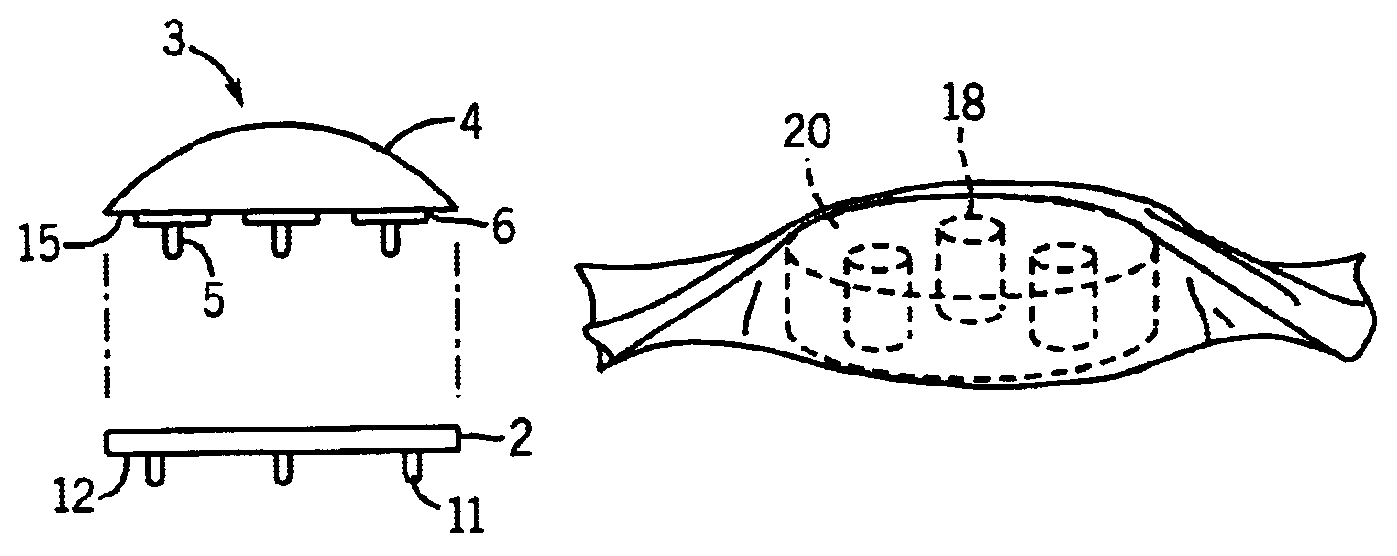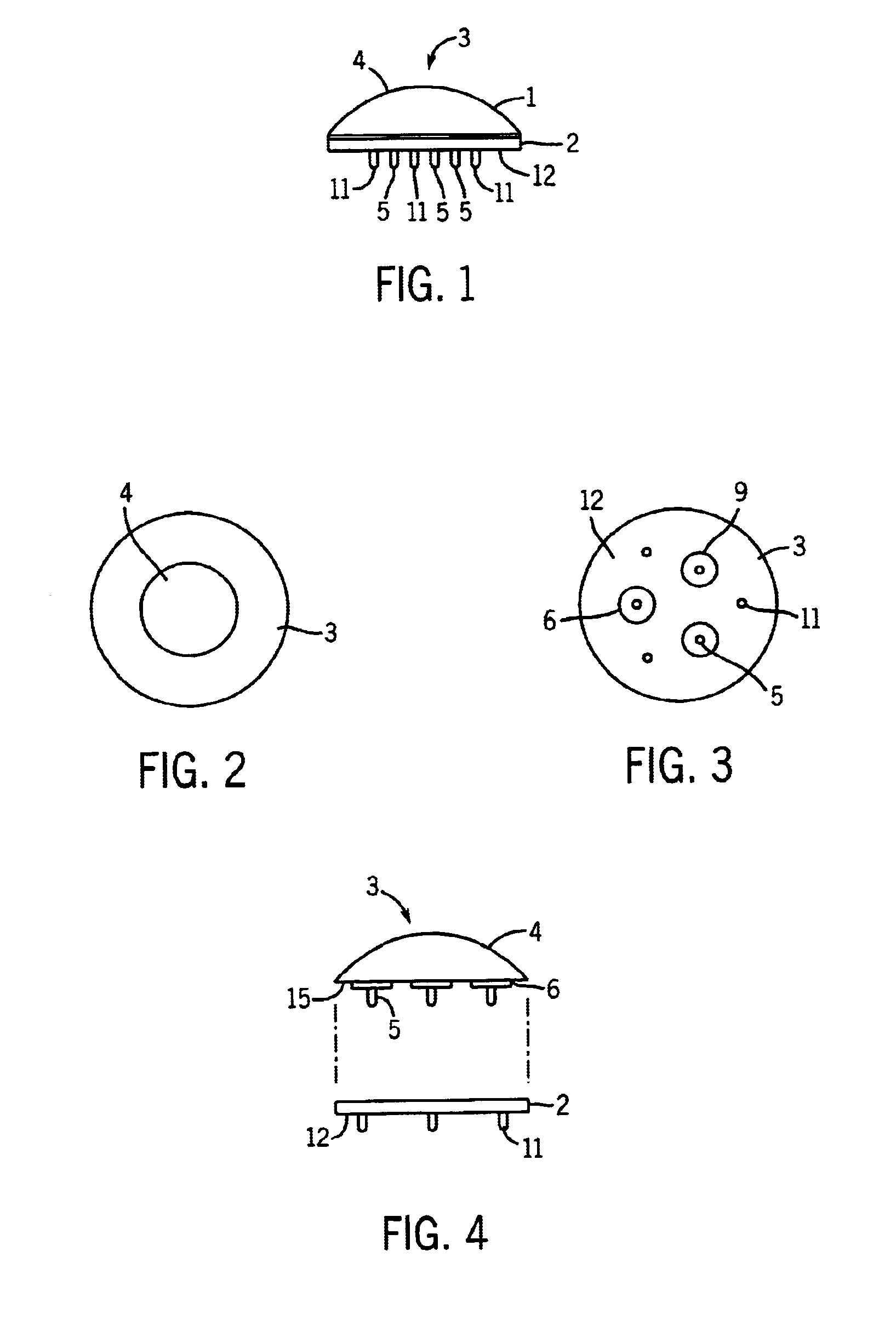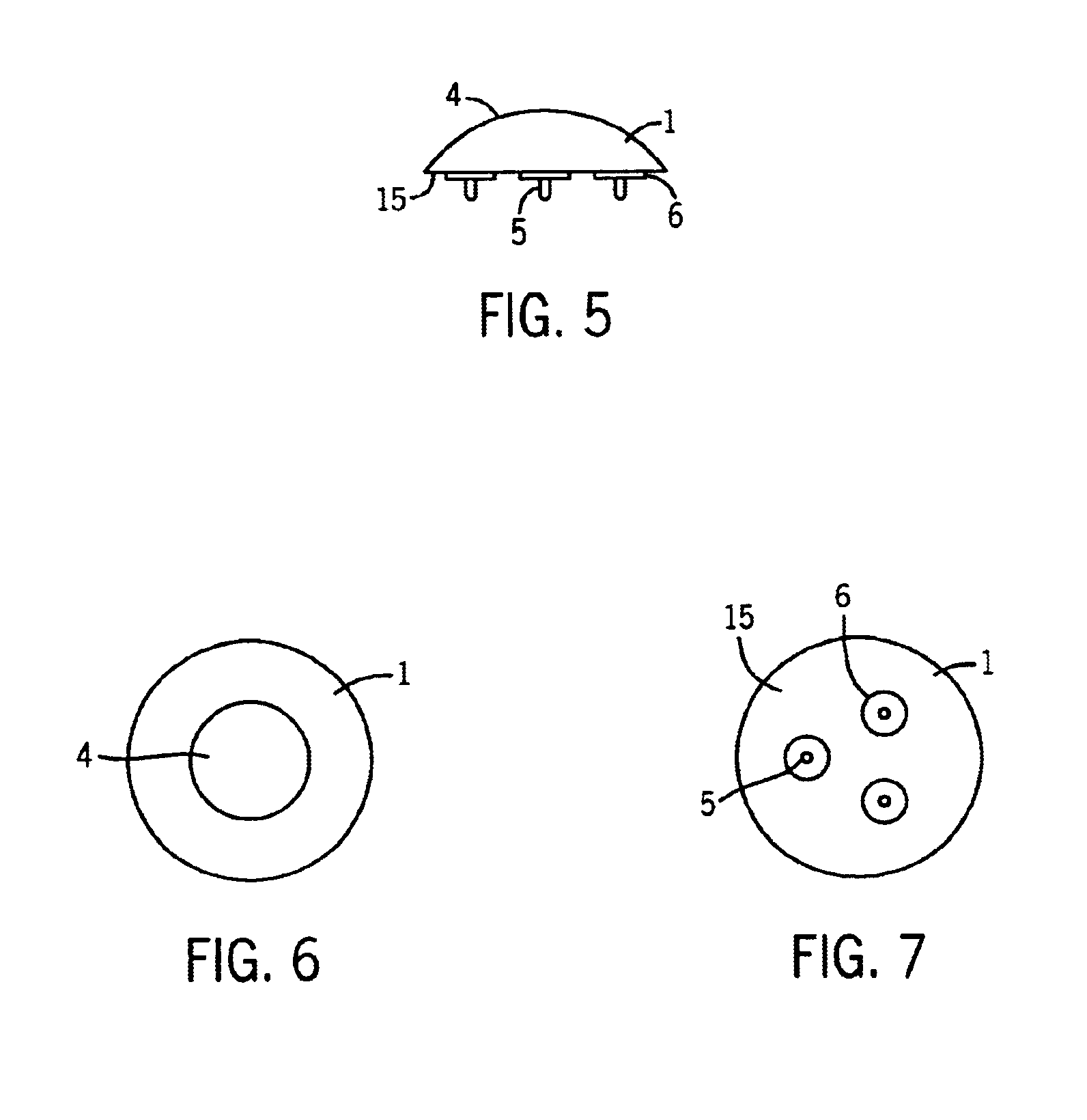Patellar trial and drill guide for use in knee replacement surgery
a drill guide and trial technique technology, applied in bone drill guides, surgery, medical science, etc., can solve the problems of inability to properly function the knee joint, clinical failure of primary total knee replacement, and knee replacement surgery, so as to reduce the steps involved, reduce the operative time and potential complications
- Summary
- Abstract
- Description
- Claims
- Application Information
AI Technical Summary
Benefits of technology
Problems solved by technology
Method used
Image
Examples
Embodiment Construction
Referring now to the drawings, FIGS. 1-4 illustrate the patellar trial and drill guide 3 of the present invention. A patellar trial is used during primary total knee replacement surgery or revision total knee replacement surgery to assess the placement and function of the patella and femur. The correct articulation between the patella and femur is crucial to long term success of total knee replacement surgery.
To surgically replace a damaged patella, the damaged portions of the natural patella articulating surface are removed or resected, while preserving as much of the natural patella bone as possible and leaving the attachments between the natural patella, the muscle and the tendon intact. The resection should be as flat and straight as possible to insure a secure bond with a patellar implant. An artificial patellar implant is then attached to the resected surface of the natural patella. During this process, a patellar trial is used to determine the exact size, shape and location o...
PUM
 Login to View More
Login to View More Abstract
Description
Claims
Application Information
 Login to View More
Login to View More - R&D
- Intellectual Property
- Life Sciences
- Materials
- Tech Scout
- Unparalleled Data Quality
- Higher Quality Content
- 60% Fewer Hallucinations
Browse by: Latest US Patents, China's latest patents, Technical Efficacy Thesaurus, Application Domain, Technology Topic, Popular Technical Reports.
© 2025 PatSnap. All rights reserved.Legal|Privacy policy|Modern Slavery Act Transparency Statement|Sitemap|About US| Contact US: help@patsnap.com



